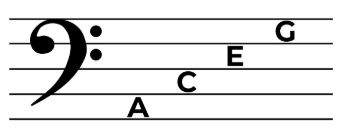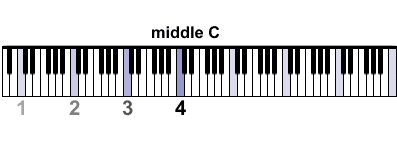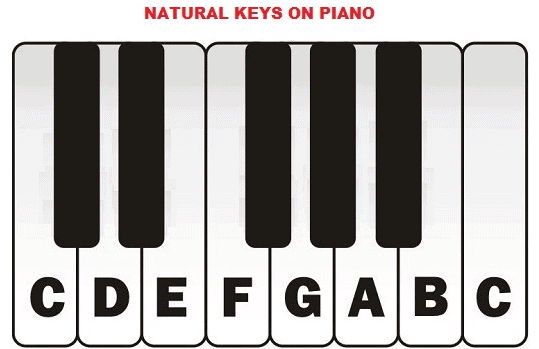Worksheet Solutions: Introduction to Piano | Piano Tutorials Course: Beginners to Advance - Class 6 PDF Download
| Table of contents |

|
| Multiple Choice Questions (MCQs) |

|
| Fill in the Blanks |

|
| Match the Following |

|
| True or False |

|
Multiple Choice Questions (MCQs)
1. What do the spaces in the bass clef represent?
A) F, A, C, E
B) A, C, E, G
C) E, G, B, D, F
D) G, B, D, F, A
Correct Answer: B
Explanation: The spaces in the bass clef are A, C, E, and G, remembered by the phrase "All Cows Eat Grass."
2. Which of the following factors is important when selecting a piano?
A) The brand name only
B) The color of the piano
C) The size, space, and budget
D) The number of black keys only
Correct Answer: C
Explanation: Important factors when choosing a piano include size, space, budget, and whether it's acoustic or digital.
3. What is the function of the treble clef in sheet music?
A) It represents low-pitched notes played with the left hand
B) It shows high-pitched notes played with the right hand
C) It is used only in digital pianos
D) It is used for only classical music
Correct Answer: B
Explanation: The treble clef represents higher-pitched notes and is typically played with the right hand.
4. How many white keys are there in one complete octave on a piano?
A) 5
B) 10
C) 8
D) 7
Correct Answer: D
Explanation: A complete octave consists of 7 white keys (A, B, C, D, E, F, G) and 5 black keys.
Fill in the Blanks
1. The ______________ is the set of five horizontal lines on which music notes are placed.
Correct Answer: Staff
Explanation: The staff is a system of five lines and four spaces used to write musical notes.
2. The ______________ is usually played with the right hand and represents high-pitched notes.
Correct Answer: Treble clef
Explanation: The treble clef (G clef) is used for high-pitched notes and is mostly played by the right hand.
3. The ______________ is usually played with the left hand and represents low-pitched notes.
Correct Answer: Bass clef
Explanation: The bass clef (F clef) is used for low-pitched notes and is mostly played by the left hand.
Match the Following

Correct Answer: 1 - B, 2 - A, 3 - D, 4 - C
Explanation:
- The treble clef is also called the G clef, used for high-pitched notes and is played with the right hand.
- The bass clef is also called the F clef, used for low-pitched notes and is played with the left hand.
- The staff consists of five lines and four spaces where notes are written.
- Middle C is a reference point near the center on the keyboard, dividing treble and bass clefs.

True or False
1. The bass clef is also called the G clef. (False)
Explanation: The treble clef is called the G clef, while the bass clef is called the F clef.
2. The white keys on a piano represent natural notes. (True)
Explanation: The white keys represent A, B, C, D, E, F, and G, which are natural notes.

3. Acoustic pianos do not need tuning. (False)
Explanation: Acoustic pianos require regular tuning to maintain proper pitch and sound quality.
|
45 videos|12 docs|6 tests
|
FAQs on Worksheet Solutions: Introduction to Piano - Piano Tutorials Course: Beginners to Advance - Class 6
| 1. What are the basic elements one should know before starting to play the piano? |  |
| 2. How long does it typically take to learn piano for beginners? |  |
| 3. What are some effective practice techniques for beginners learning piano? |  |
| 4. Is it necessary to take piano lessons, or can one learn to play independently? |  |
| 5. What should I look for when purchasing a beginner piano? |  |















